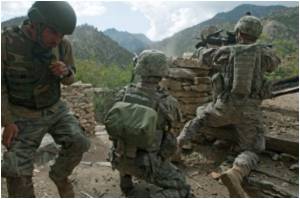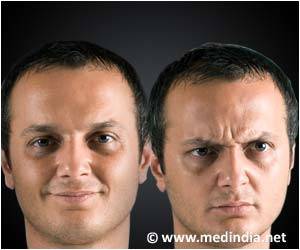Social support and community acceptance can help mitigate the trauma of those children who manage to return to normal life.

Dr. Theresa Stichick Betancourt of the Harvard University and colleagues evaluated these youth at three time points in order to determine the long-term course of internalizing and externalizing problems and adaptive/prosocial behaviors, and investigate whether post-conflict factors contributed to adverse or resilient mental health outcomes. Virtually all of the subjects were children who were recruited by force or abduction to join the Revolutionary United Front (RUF), the rebel force which was one of the main actors in the 11-year civil war in Sierra Leone. At the time of the first evaluation (2002) 55.3% of the youth lived with a least one biological parent, although the percentage decreased to 34.1% by the third evaluation (2008).
In describing the characteristics of the participants, the investigators state, “Youth joined the rebels at a mean age of 10.3 years and remained an average of 4.1 years. Participants had witnessed an average of 6.2 war-related violent events. Forty-five percent of girls and 5% of boys reported being raped during their time with the rebels. More than a quarter of the sample (26.9%, n=70) reported having killed or injured others during the war.”
Investigators used a variety of standard measures to evaluate mental health outcomes, including the Post-War Adversities Index and the Child Posttraumatic Stress Disorder Reaction Index, and locally-derived assessments, such as a scale of Community Acceptance.
The findings demonstrated that increases in externalizing behavior were associated with both killing/injuring others during the war and post-conflict stigma. Additionally, high baseline levels of internalizing problems were associated with surviving rape while increases in these types of problems were associated with younger involvement in armed groups and with social and economic hardships. Additionally, the article reports that long-term well being for child soldiers can be mitigated by post-conflict factors. In particular, increases in community acceptance exerted a positive influence on all outcomes investigated. For instance, with increasing levels of acceptance, the youth demonstrated significant improvements in both externalizing and internalizing behaviors. Social support, school access, and increased community acceptance were also associated with increases in prosocial and adaptive behaviors.
In the JAACAP article, Betancourt and colleagues state, “Based on our findings, we suggest that post-conflict adversities and resources must be given closer attention in both research and service delivery. Such understanding of the impact of multiple war-related and post-conflict factors is important for identifying appropriate intervention targets. The results of this study emphasize the importance of investing in longer-term (i.e., beyond the immediate post-conflict period) approaches to monitoring and supporting the wellbeing of war-affected youth.”
Advertisement
Source-Medindia








